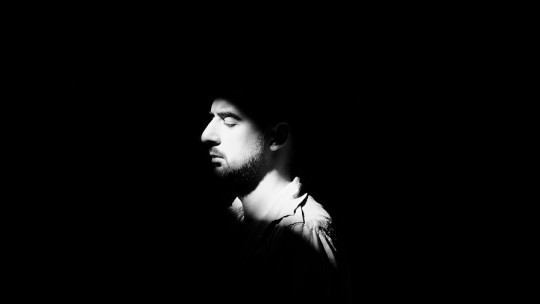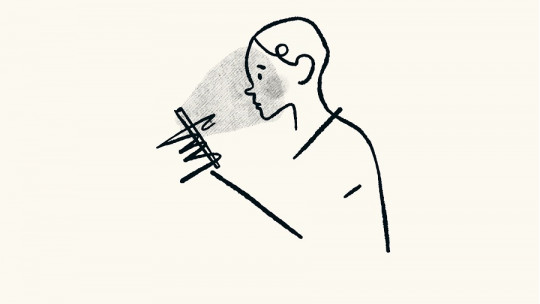
With systematic desensitization, a person can learn to confront objects and situations that are particularly threatening, exposing themselves in a real or imaginary way to stimuli that produce an anxiety response. At PsicologíaOnline, we believe it is necessary to write about the applications of Anxiety and stress of the Systematic Desensitization Technique.
It’s about learning to relax while imagining scenes that progressively cause greater anxiety. “The repeated presentation of the stimulus causes it to progressively lose its ability to evoke anxiety and consequently physical, emotional or cognitive discomfort.” The technique is very effective to combat classic phobias, chronic fears, some interpersonal anxiety reactions…
The process
It’s fundamental exposing oneself in a real or imaginary way to stimuli that produce anxiety-producing emotions and the more times the better. It is about never avoiding, about facing but armed with resources that you did not have before but that can be learned. That is why it is very important to repeat, repeat and repeat. Carrying out systematic and progressive approaches (slowly but surely, little by little until the anxiety element loses strength) which will be reinforced punctually, so that the response loses power in the face of said situation.
We can do it reviewing with the imagination the exposure to the stimulus that generates anxiety (e.g. how to respond to a situation or thought to which we feel out of control or with great psychological or physiological discomfort) and after mastering the situation with the imagination (seeing, for example, ourselves responding in a controlled way and in a much more positive and adaptive) later move on to practice with direct exposure. It is about undoing conditioning that causes anxiety and learning more positive and adaptive ones. This works for any situation that can cause anxiety.
The steps are:
- Relax your muscles at will (differential or progressive relaxation).
- Make a list with all the fears or anxious situations.
- build a hierarchy of anxiety scenes from lowest to highest intensity of anxiety.
- Advance through imagination or through confrontation, with the feared situations of the hierarchy It is important to practice visualization so that the situation is experienced as very real. You will not move on to a new anxiety-producing situation until you have achieved that the previous situation in the hierarchy is completely resolved in terms of the anxiety experienced.
This article is merely informative, at PsychologyFor we do not have the power to make a diagnosis or recommend a treatment. We invite you to go to a psychologist to treat your particular case.
If you want to read more articles similar to Stress and anxiety: Systematic Desensitization Technique we recommend that you enter our Clinical Psychology category.
Bibliography
- Bados, A. (1990). Coping and preventing stress: Intervention on public speaking difficulties. In JM Buceta, and AM Bueno (Eds.), Behavior Modification and Health. (pp. 63-84). Eudema University Manuals.
- Bastida de Miguel, A.Mª. Fears, anxiety and phobias: differences, normality or pathology. Online psychology news bulletin – Thursday, March 31, 2011. At http://www.psicologia-online.com/infantil/miedos-ansiedad-y-phobias.shtml
- Bastida de Miguel, A.Mª. Cognitive-behavioral treatment in a case of obsessive-compulsive disorder. 10th Virtual Congress of Psychiatry. Interpsiquis – February 2009. Psiquiatria.com and Psychology. International On-line Journal of Psychology – ISSN 1137-8492 (Vol.13 Nº1-Jan 2009)
- Bastida de Miguel, A.Mª. Importance of applying third generation psychological therapies in resolving a case of fibromyalgia. XI Virtual Congress of Psychiatry (18cof345023). Interpsiquis – February-March 2010. Psiquiatria.com
- Bastida de Miguel, A.Mª. Dual pathology and cognitive behavioral treatment in a case of anorexia, drug addiction with comorbid anxiety. XI Virtual Congress of Psychiatry (conf46319) Interpsiquis – February-March 2010. Psiquiatria.com
- Bastida de Miguel, A.Mª. Psychotherapy applied to a case of night terrors with generalized anxiety caused by a multitude of phobias. 12th Virtual Congress of Psychiatry (6conf1550204). Interpsiquis – February-March 2011. Psiquiatria.com
- Belloch, A.; Sandín, B. and Ramos, F. Manual of Psychopathology. Vol. II. (2002). Madrid. McGraw-Hill Interamericana of Spain.
- Bernstein, DA, Borkovec, TD, Progressive Relaxation Training. Bilbao, Desclee, 1983
- Benedito, MC and Botella, C. (1992) “The Treatment of Generalized Anxiety through Cognitive-Behavioral Procedures. Spain: University of Valencia, obtained on April 30, 2008 at http://www.psicothema.com/ psychothema.asp?ID=846.
- Buceta. J. M: Behavioral treatment of a case of stress. In: Macia Antón.D and Méndez Carrillo. F. X: Clinical applications of behavior evaluation and modification. Study of cases. Ed. Pyramid. Madrid. 1988
- Bonet, T. (1983) Philosophical Principles and techniques of Rational Emotive Therapy. Cognitive Behavior Modification, (3), 37-48.
- Horse,V. et al. (1995). Manual of psychopathology and psychiatric disorders. 21st Century Editions.
- Cano Vindel, A. (2000): Cognitive Techniques








